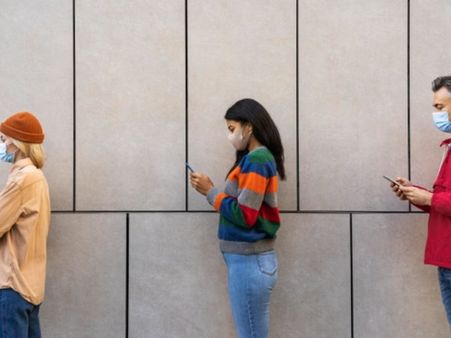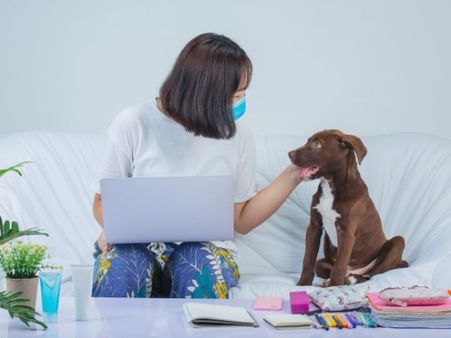Just In
- 38 min ago

- 1 hr ago

- 4 hrs ago

- 4 hrs ago

Don't Miss
- Finance
 Gold Prices Ayodhya: In Ram-Janma-Bhumi, 24carat Falls By Rs 380 10-Grams, Drops Rs 3,800 In 100-gram
Gold Prices Ayodhya: In Ram-Janma-Bhumi, 24carat Falls By Rs 380 10-Grams, Drops Rs 3,800 In 100-gram - Sports
 Bismah Maroof: Former Pakistan Captain Announces Shock Retirement - Her Career at a Glance
Bismah Maroof: Former Pakistan Captain Announces Shock Retirement - Her Career at a Glance - Movies
 Vijay Verma to Navneet Malik: Top 5 Antagonists In OTT World Who Left Everyone In Awe Of Their Performances
Vijay Verma to Navneet Malik: Top 5 Antagonists In OTT World Who Left Everyone In Awe Of Their Performances - Automobiles
 FanCode Brings The 2024 DTM Season To India With Exclusive Broadcast Rights
FanCode Brings The 2024 DTM Season To India With Exclusive Broadcast Rights - Education
 JEE Main Result 2024 Out, Check Category- Wise Toppers' List Here
JEE Main Result 2024 Out, Check Category- Wise Toppers' List Here - Technology
 Qubo InstaView Video Door Phone Launched in India: Check Price, Features
Qubo InstaView Video Door Phone Launched in India: Check Price, Features - News
 Karnataka Weather Alert: Clouds And Sun to Play Together In Bengaluru Weather Forecast
Karnataka Weather Alert: Clouds And Sun to Play Together In Bengaluru Weather Forecast - Travel
 Escape to Kalimpong, Gangtok, and Darjeeling with IRCTC's Tour Package; Check Itinerary
Escape to Kalimpong, Gangtok, and Darjeeling with IRCTC's Tour Package; Check Itinerary
COVID-19: Coronavirus Infection Transmitted Mainly Through Air, Confirms CDC
The US Centers for Disease Control and Prevention (CDC) has recognised that SARS-CoV-2, the virus that causes COVID-19, is airborne. The virus can transmit via respiratory fluids (droplets released during respiration).
The CDC report stressed that exposure to respiratory fluids (fine respiratory droplets and aerosol particles) present in the air and carry viruses is the main reason for contracting COVID-19 infection [1].


How Is COVID-19 Infection Transmitted Through Air?
As per the findings, the CDC pointed out the following:
- People release respiratory fluids during exhalation, such as quiet breathing, speaking, singing, exercise, coughing, sneezing in the form of droplets [2].
- Large droplets settle out of the air within seconds to minutes, but very fine droplets can remain suspended in the air for minutes to hours.
- The droplets that remain in the air carry viruses and transmit infection.
- Importantly, the risk of SARS-CoV-2 infection varies according to the amount of virus to which a person is exposed.
- inhalation of very fine respiratory droplets and aerosol particles,
- deposition of respiratory droplets on exposed mucous membranes in the mouth, nose, or eye by direct splashes and sprays, and
- touching mucous membranes with hands that have been soiled directly by virus-containing respiratory fluids or indirectly by touching surfaces with the virus on them.
- Infections through inhalation at distances greater than six feet from an infectious source are less likely than at closer distances.
- When an infectious person exhales the virus indoors for an extended time of more than 15 minutes and, in some cases, hours, it can lead to virus concentrations in the atmosphere.
- Suppose there is a high concentration of infected droplets in the air. In that case, it is sufficient to transmit infections to people more than 6 feet away [3].
- The same, in some cases, can transmit infections to people who have passed through that space soon after the infectious person left.
- Here, the CDC stresses that risk is more in enclosed spaces with inadequate ventilation [4].
Exposure to the droplets occurs in three ways mainly:
The risk of infection from breathing in the infected air droplets varies:

In April, the Lancet had claimed in a new assessment that there is consistent, strong evidence to prove that the SARS-CoV-2 virus is predominantly transmitted through the air.

How Long Does The COVID-19 Virus Survive On Surfaces?
According to WHO, the timeline is not clear. However, most likely it behaves like other coronaviruses. Research shows coronaviruses can survive on surfaces for a few hours up to several days, depending on conditions, like the type of surface, temperature, or humidity.
Existing Guidelines Against COVDI-19 Are Effective
As there is still no definitive clarity over the mechanism of the SARS-CoV-2, the available study findings show that the existing recommendations and guidelines to prevent SARS-CoV-2 transmission remain effective [5].

COVID-19 prevention guidelines such as the following help reduce transmission both from inhalation of virus and deposition of the virus on exposed mucous membranes.
- Physical distancing
- Community use of well-fitting masks (e.g., barrier face coverings, procedure/surgical masks)
- Adequate ventilation
- Avoidance of crowded indoor spaces
Transmission through soiled hands and surfaces can be prevented by practising good hand hygiene (washing with soap) and by environmental cleaning [6][7].

Factors Such As Heat And Humidity Matters In COVID-19 Transmission
According to WHO officials, the coronavirus can go airborne, staying suspended in the air depending on factors such as heat and humidity [8]. Health experts and researchers are looking at the different environmental conditions that COVID-19 can persist. The studies are specifically examining how humidity, temperature and ultraviolet lighting affects the disease as well as how long it lives on different surfaces, including steel.
The officials added, "In healthcare facilities, we make sure healthcare workers use standard droplet precautions with the exception ... that they're doing an aerosol-generating procedure."
Some studies had indicated that humidity can have a greater impact on our vulnerability to the disease. That is, when the air is drier than usual, it can reduce the amount of mucus coating our lungs and airways - which forms a natural defence against infections - and without it, an individual is prone to contracting infections.
Earlier Studies By WHO Claimed COVID-19 Is NOT Airborne
In a study published on June 2020 in Lancet, WHO confirmed that the coronavirus is not airborne. As the virus spreads through the droplets generated from an infected person, there were doubts about the airborne virus. WHO had previously reported that the droplets are too heavy to hang in the air and quickly fall onto the surface[9].
However, WHO health officials had pointed out that an individual can be infected by breathing in the virus if they are within 1 metre of an infected person. Therefore, weighing in on the importance of maintaining social distancing to avoid the spread of the virus [10].

Healthcare Workers Should Take Extra Precautions
The coronavirus spreads through person-to-person, between people who are in close contact with one another (within about 6 feet) and through respiratory droplets produced when an infected person coughs or sneezes [11].
As the virus is transmitted through droplets or little bits of liquid, mostly through sneezing or coughing, healthcare workers increase the risk. When doing an aerosol-generating procedure like in medical care facilities, the risk of covid-19 transmission is high.
Some studies have indicated that humidity can have a greater impact on our vulnerability to the disease. That is, when the air is drier than usual, it can reduce the amount of mucus coating our lungs and airways - which forms a natural defence against infections - and without it, we are prone to contracting infections [12].
On A Final Note...
The infectious level of SARS-CoV-2 needed to transmit infection has not been established by the CDC. However, current evidence strongly suggests transmission from contaminated surfaces does not contribute substantially to new infections.
-
 pregnancy parentingMysterious Pneumonia Outbreak In China: What Are The Long-Term Effects Of Pneumonia In Children?
pregnancy parentingMysterious Pneumonia Outbreak In China: What Are The Long-Term Effects Of Pneumonia In Children? -
 healthCan You Get Back COVID-Related Loss Of Sense Of Smell And Taste (Parosmia)? Looks Like You Can!
healthCan You Get Back COVID-Related Loss Of Sense Of Smell And Taste (Parosmia)? Looks Like You Can! -
 healthDid Covid-10 Vaccination Increase Risk Of Sudden Deaths In Young Adults? ICMR Finds This..
healthDid Covid-10 Vaccination Increase Risk Of Sudden Deaths In Young Adults? ICMR Finds This.. -
 wellnessDelhi Air Pollution, Air Quality Very Poor: Do Covid Masks Help Reduce Pollution Side Effects?
wellnessDelhi Air Pollution, Air Quality Very Poor: Do Covid Masks Help Reduce Pollution Side Effects? -
 healthNobel Prize 2023: Scientists Behind The COVID-19 mRNA Vaccines Wins
healthNobel Prize 2023: Scientists Behind The COVID-19 mRNA Vaccines Wins -
 healthWhat Is Disease X? 20 Times More Deadlier Than Covid 19; Can Cause 50 Million Deaths, Does It Have Vaccine?
healthWhat Is Disease X? 20 Times More Deadlier Than Covid 19; Can Cause 50 Million Deaths, Does It Have Vaccine? -
 healthCOVID-19 Vaccines and Heart Attacks: New Studies Show Different Results; What Are They?
healthCOVID-19 Vaccines and Heart Attacks: New Studies Show Different Results; What Are They? -
 healthDo You Pick Your Nose? Stop! It Can Increase COVID Risk
healthDo You Pick Your Nose? Stop! It Can Increase COVID Risk -
 healthEris Variant: WHO Alarms New Covid Wave; Should India Be Concerned About This Pandemic
healthEris Variant: WHO Alarms New Covid Wave; Should India Be Concerned About This Pandemic -
 healthVitamin D Deficiency Linked With Increased Risk Of Long COVID
healthVitamin D Deficiency Linked With Increased Risk Of Long COVID -
 healthCOVID Surge In India: Do You Need A COVID-19 Booster Shot?
healthCOVID Surge In India: Do You Need A COVID-19 Booster Shot? -
 healthCOVID-19: IMA Cites 3 Reasons Behind Recent Surge In Covid-19 Cases: What Are They?
healthCOVID-19: IMA Cites 3 Reasons Behind Recent Surge In Covid-19 Cases: What Are They?


 Click it and Unblock the Notifications
Click it and Unblock the Notifications



